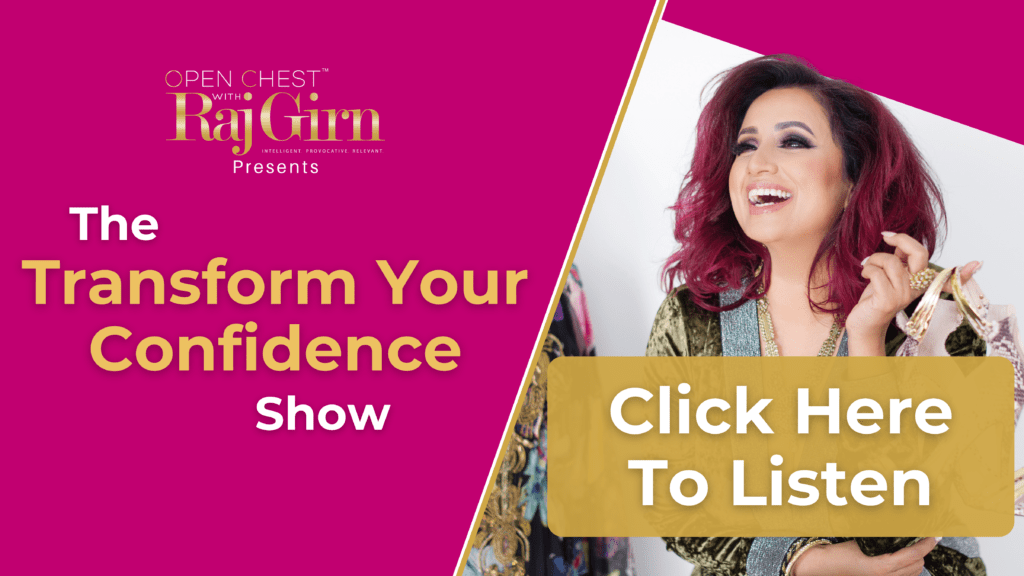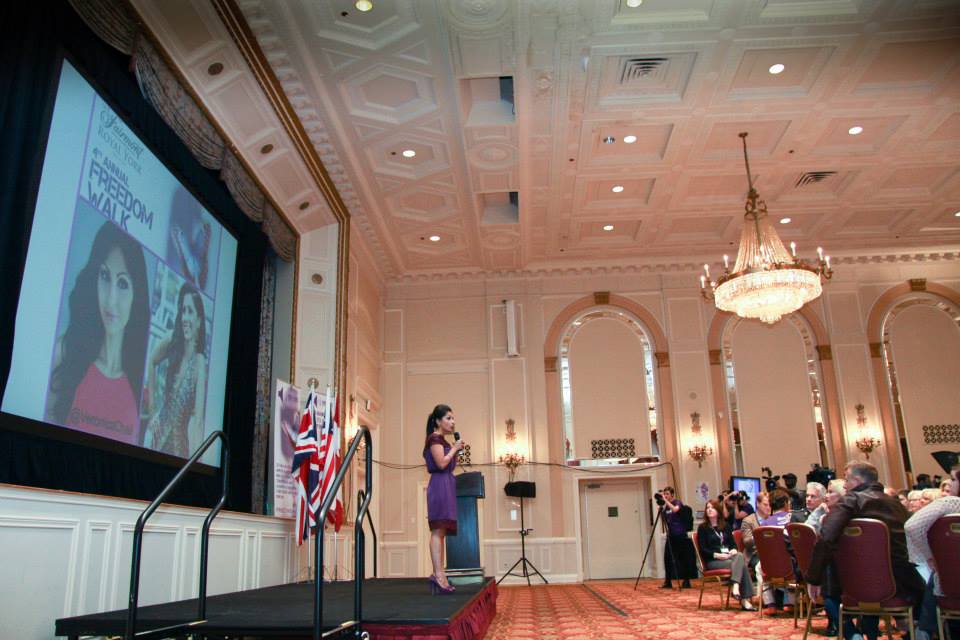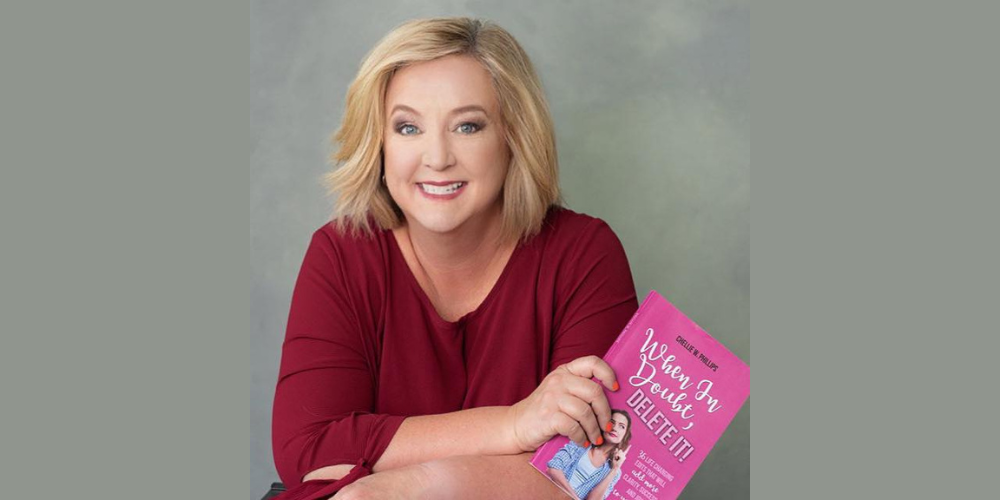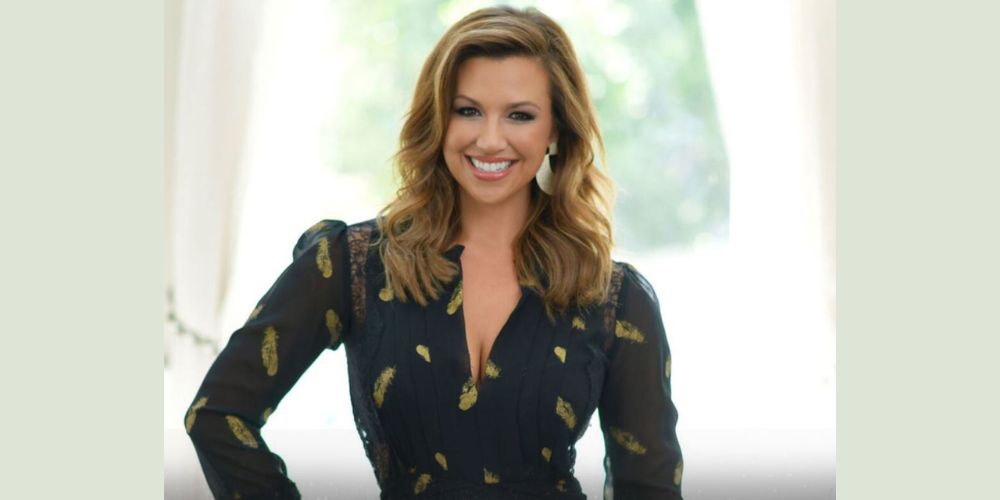Raj Girn: Are you struggling with being able to communicate your story effectively to attract new customers, because you’re not able to figure out what platforms to use and why? Then this episode is for you! With this week’s theme of Media and Communications, the goal is to dissect the art and craft of good storytelling. My guest is award-winning journalist, former university professor, and the founder of VC Strategies, Veronica Chail-Gupta.
Here is Part Two of our conversation.

Raj Girn: V, can you encapsulate what is the connection between good storytelling and good communications that people need to know? And I feel that we need to broach this topic, too, because at the end of the day, why we are telling a story is because we want to ensure that we are razor-sharp with our communications, with the intended purpose to find out the right people and to also make sure that we are being clear with the communications of what that story is, is such a direct connection, especially in business, between good storytelling and good communication. So from your perspective, what do people need to know about that connection?

Credit: @suhaag.com
Veronica Chail: I think it is instrumental in business people, whether it’s the audience, whether it’s the team members or just the leaders at the top. They want to work through stories. People naturally want to work through stories. Digesting numbers is certainly faster. And I think that’s what a lot of people resort to it because it’s quick to throw out numbers and narratives. Good storytelling requires a lot of intelligence. It requires a lot of time and it requires truth. And so for you to work out a story and to be able to communicate that to an audience who’s willing to digest that and also buy from you or take on whatever you’re selling them, it requires time and dedication. And not everyone wants to do that as opposed to saying, “Hey, I have a great product and we believe in it and you should, too” versus something where how do you humanize products? How do you humanize objects? And I think that’s where it comes to human communication strategies. Rather, it’s so vital to incorporate that within the internal communications of a company, because if you don’t, I don’t think people naturally connect with you. And so good storytelling builds loyalty, it builds connection, it builds compassion, it builds empathy and it builds trust. And over time, this is why we continuously buy from the same businesses over and over again, because we believe in their story. We believe in a product. We believe in what they’re selling.
“Good storytelling builds loyalty, it builds connection, it builds compassion, it builds empathy and it builds trust. And over time, this is why we continuously buy from the same businesses over and over again, because we believe in their story. We believe in a product. We believe in what they’re selling.” ~Veronica Chail-Gupta
Absolutely. I love everything about what you just said. There was something that you said that I just kind of keeps coming back to me. And that is that you said that is easier for people to put out numbers than to put out narrative. That is such a powerful statement. I hope that you’ll put that in quote marks on your website. That’s a powerful statement.
It is, though. It is. It really is, because and I think so many CEOs and business leaders and entrepreneurs lead with numbers because that is it. It is also perceived as being factual. However, the person than I am, statistics aren’t always factual. They can be perceived in what we always say within my company. It’s often B.S. in a ball gown. And I really believe that at times. Because we like to throw out numbers. Even the media does it all the time. The media model and the media machine is built on storytelling. It is just human stories. That’s all it is. The entire media model is built on that. So why can’t corporations utilize that for services or products that they’re selling? Persuasion is a centerpiece of business. So if you incorporate story and speak and story, you will naturally win over audiences because they will remember your story, not some bullet point statistics. Well, at least this is the way I perceive information. And I know a lot of people do, too.
Absolutely. And, you know, it’s funny that you talked about the statistics on this, but statistics says that 49 per cent of what is statistical isn’t even fact.

Exactly the right thing. And I believe that because a lot of it can be argued. So, I mean, it changes. Facts change. Stories outlive us. Stories are like these stories that we can from generation to generation. They’re beautiful gifts that we share with one another and we relate to each other. And I think that we often utilize it in the media or in cinema or in writing and books. My first language wasn’t English, my mother tongue is Swedish, my parents are from India. And when I came here, I used to get in trouble because I used to stay up late at night reading books and I used to read all these fictional books and I would do these deep dives into the library and have stacks of books for reading because I could just relate to the story whether they were real or not. And I love biographies as well. But that’s how I learned English, and that’s now the language I speak in.
Oh my gosh. Another nugget of wisdom that you just shared there, which I want to kind of emphasize for everyone out there in case they missed it. And that is the fact that numbers can change. Depending on what’s going on at any given moment. And numbers are really predicated on who you’re asking the questions to. So there could be biases there. And there’s so many different variables there. But a story is always the same. Like when you tell your hero story, it’s never going to change. When you tell the story of, like you just did, that you just shared a story there of how you learned English when your mother tongue was Swedish.
That story is never going to change. So just think about that for a moment. Like the power of storytelling and how it infuses into your brand DNA and how your brand DNA helps you create an infrastructure for the company and its mission and its mandate and all the products and services that you’re creating from that. They have a purpose to a specific end. So if you look backwards from the place you want to go and you think about all these pieces that I just mentioned, right now, each piece has a purpose for you to ensure that you are setting yourself up for success. And success isn’t predicated on a trend. Success is predicated on the vision. And the vision is something that is kind of the nirvana, the promised land that you’re taking people on, even if they’re buying a T-shirt from you or they are buying just an inanimate object.
You still got to take them on a journey because there’s millions of other companies that are also selling the same inanimate object. The reason why a person will spend $2000 on a Louis Vuitton versus the same product functionally you can get for $10 at Wal-Mart is what we just finished talking about, is the story is the brand DNA and it’s building your company from that perspective. Anything that you want to add to what I just said there before we move on, V?
Well, when you talk about money, I always say this and I believe in this, is that story and storytelling is a human currency of connection, relationships and contact. It really is so important in how we relate to one another, how we communicate with each other, how we persuade one another. It is so important that we have that connection even with the struggle part of it. I think a lot of leaders who are able to take off the mask and take off the label and can connect with their employees and their audiences in a very real way, not necessarily a previous struggle that they overcame, but a current struggle, whether it’s mental health or anything that they may be going through, they can showcase their own mortality. And they know those real good leaders really do understand their own mortality, where they can actually showcase who they are by storytelling in everything that they do.
“Storytelling is a human currency of connection, relationships and contact. It really is so important in how we relate to one another, how we communicate with each other, how we persuade one another.” ~Veronica Chail-Gupta
So I think that’s what’s so incredible for the great brands who have been able to create stories that are based on truth and have been able to convey that to the audiences. They’re the ones that are still around. I mean, they’re the ones that people are really signing up for because they stand for something, whether it is charity, whether it is humanitarian causes. It could be price points, it could be the quality, could be the sourcing of fabrics. It could be the services that they provide, who they represent. It’s really important that you display that in your company and showcase that to the world and to really not be afraid to tell the truth, to take off that mask. I think too many people want to have that glass building around them where they can’t be touched. And there is a little bit of distance because they’re a business. But you also have to connect to your clientele in a very real human way.
And this brings me to something perfectly poised and positioned for my next question. How does presenting your story to the three main types of media channels, namely traditional news and social, differ, if at all? I feel this is the perfect next question after what you just said.
It has certainly changed from the time that I started. Right now with traditional it still stands, we need a good story, something that connects to the everyday person. Even when you are pitching to the media outlets right now, whether it is radio, television and print, the conventional formats or digital, they still need good storytelling. They need to understand what has happened, whether it’s a struggle, whether it relates to a particular topic such as bullying. It could be Black Lives Matter. It could be the struggles of parenting in a pandemic, whatever it is, people have to be able to relate in a very human way. If you’re selling a product, it doesn’t work. Obviously, being on the receiving end, when I was a producer, I would get press releases all the time and I would read it as if it was an advertisement and it didn’t work because I couldn’t sell a product. I couldn’t humanize the product based on what they were giving me.
I knew how to kind of tweak it and turn it and twist it a bit, but it’s very difficult. So there’s a big difference in PR and journalism. And that’s why it’s so important when you are in the world of media right now, because on social media, hey, you can sell anything, you can share anything. You put the hashtag #ad people know, the audiences know, to be honest, from the receiving end, it doesn’t matter how authentic you come across the second I see a hashtag #ad, it’s an advertisement, right? When we see stories in the media, conventional, traditional media, it’s not necessarily the same. It’s more based on the humanity. I remember as well, like getting dozens and dozens of press releases when I work in the media and there were great pictures and great products. But because they were not relatable, I could in air those pieces just based on the fact that it was so advertisement marketing heavy. And that doesn’t work in a media machine that’s trying to sell human stories to audiences.

You know, so interesting that you said that. Folks, I hope that you really kind of pay heed to what Veronica just said there, because if you’re looking at creating awareness through kind of the public relations channel and you’re looking at getting media to kind of be behind your product, your service, your mission mandate, whatever it is that you’re trying to put out there in the world, don’t sell them on the product or service. Sell them on the story. If you focus on the story, what you’re doing is you’re doing the work for them. You’re telling them exactly what it is that they need and that’s so much more easier to sell.
“If you focus on the story, what you’re doing is you’re doing the work for them. You’re telling them exactly what it is that they need and that’s so much easier to sell.” ~Raj Girn
And it’s interesting because a lot of my clients who hire publicists, they always say, “I have been trying to sell this to media for the longest time.” This publicist just told the story of this and the product just happened to be a byproduct of the bigger universal story and all the big media houses took it on. So it’s really important what we just said, that you pay heed, again, it just it comes down to how truly layered the the value of good storytelling is and being very intentional about what your outcome is that you’re looking to accomplish.
I’ll give you a quick example. I remember there was a press release and it was, I believe, a pharmaceutical pill to help prevent heart attacks. Great story in the sense of, hey, maybe it works based on the numbers that they were providing. It was, again, all stats and so forth. But again, here you have a great glossy photo of this pill and its product and all the stats aligned. We never aired it because it didn’t align with my show format at the time, but I thought, hey, is there someone in the company whose father may have passed away from a heart attack?
I’ve suffered from a heart attack. Is there someone that they can actually showcase and share a story about how they suffered from a particular health issue and how they struggled to figure out and the struggle of trying to find something that actually helps or prevents heart attacks or lowering the numbers and then providing this as a solution where they got investors involved? There’s a charitable component to it that is a full package versus just saying, hey, here is a product, that I need to understand and I want to talk to that person, that survivor, the person who is experiencing it because they can speak to me in story. So I always used to think about that. And I was like, why don’t they include someone who is maybe related to this product that they’re selling.
So this brings me perfectly into something that I want to put out there to all of you guys. Anyone out there that’s feeling kind of like this is a lot of information, I didn’t realize that there was so much involved in storytelling and how on purpose you need to be with storytelling, depending on what the outcome is that you’re looking to accomplish. For anyone out there who is a novice at storytelling and communicating or is looking to get a diagnostic on their current collateral, your company, VC Strategies, offers this service, and more. Can you share the breadth of services that you offer in the storytelling and communications arena? Because I know that there’s people out there listening, waiting for that manna from heaven. And you are for anyone that’s looking for storytelling and communicating.
Thank you. Thank you so much. So we do a lot of work around storytelling, so we focus on storytelling, coaching. So let’s say you want to share a story. Perhaps you want to write a story, perhaps a book. You don’t know how to. You have a great story. We’re there for you. We do ghostwriting as well so we can write it. You take credit for it. We won’t say anything. We do it.
Yes. I can hear so many people saying yes.
I mean, writing is a very tedious task, but we’re good at it. And I believe in our team, which is run predominantly by women, I should say. And so we do ghostwriting, copywriting. We do crisis communication, we do bio writing, which is a really big one. So if you’re looking to jazz up your bio, for example, or your company bios, we can do it for you. Short format, long format, first-person, third person. We do that as well. We write all the product info for different websites. We can write all the content message development for your website. What we essentially do in a nutshell is we psychoanalyze your company/organization. If you’re starting a new venture, you’re a brand new entrepreneur or nonprofit organization who needs good content message development on your different platforms from everything from social media to print to any other channels where you’re communicating with audiences. We do that writing and we do a deep dive into the storytelling so that the storytelling is seen in all the messaging across all platforms. So that’s consistent. We do a lot of strategic communications and predominantly writing, which lends itself to storytelling. So that’s a big one.
Oh my gosh. So the big question that everyone’s asking right now, how can people get a hold of you and your team?
Well, you can reach me directly. I’d be happy to talk to you, at [email protected] or [email protected]. I’m happy to talk to you. I love talking to new entrepreneurs and new ventures. I know so many people have these great products and services, but they don’t necessarily have the tools to communicate to the audiences. And that’s my expertise. That’s something I have studied. I went to school for it. I studied it, I practiced it, I taught it. And now I formed my own company so that I can help emerging talent and CEOs and business leaders tell better stories.

In terms of storytelling and communicating, let’s play devil’s advocate for a moment. Why does it matter that what is being communicated is being communicated correctly and credibly and authentically? Like, how would anyone know whether it is anyway? And the reason I’m asking this is we are all faced with so many fake stories out there. So you see these hero stories that are literally the same story on every single person’s website. People are just it’s hard to see who’s real and who’s not real out there. And the other thing is you also don’t want to be the person that’s being the fake one, but a lot of people don’t know how to do it right, which is obviously they need to hire someone like you to be able to help fill that gap and do it right and make sure it’s the DNA of who you are. But people tend to take the shortcut and they copy whatever’s going on that’s wrong out there just because it’s got the loudest megaphone. So I want to ask you this. What would you say to those people?
Well, I think that it’s easy to copy anybody. It’s easy to be a follower. But to be original and to have longevity and to really have your foot in the game, you really need to take some time in that space. I have talked to so many executives who are in incredible places, they have done phenomenal work within their businesses, multimillion multibillion-dollar ventures and companies. And so many of them say to me, I need to give back. I need to get my story out there. I want to share with people that they can do what I did. I struggled. I came here with $5 in my pocket. It’s the rags to riches stories they want to do because there’s more to, I think, business, certainly from my experience than the dollar figure. Certainly, that’s glamorous. It’s inviting, it’s sexy, it’s fun, it’s inspiring. We all know that. But I think so many people right now really want to give back.
And I think there are those people who certainly will say, I don’t need a story, I’m selling fine. That’s great. But I think you could sell a lot more if you actually incorporated more story into your business and ventures. And I think you can have a far greater and global reach if you do that. So certainly there are those big stories. But again, as we spoke about earlier, there’s also fake statistics and people will call you out. And we’re noticing this, right? We are again. And the pandemic has certainly put light to it. Everyone’s watching everyone. You got you have everyone’s attention. So anything that’s being said and shared is being investigated by every single person. And people are calling each other out on it very openly on all platforms. So you have to tread carefully if you are going to share a fictional story, unless you’re in the world of fiction. And so you have to be careful. You really do or you’re going to get called out. The audience is far smarter than most people anticipate. We always said that in the media. If you don’t believe your own spin doctors, if you don’t believe the press releases, if you don’t even believe your own statistics internally, why should the public.
Any final words you’d like to leave everyone with about the importance of being intentional when crafting the right story to communicate your brand to all stakeholders? Give me that nugget of wisdom to close this off with.
I believe that if you want to influence people, if you want to change the world, if you want to build big brands and you want to have longevity in the game, speak, and story. And if you don’t know how, then reach out to me. I believe that storytelling is a human currency of connection, relationships and contact, and we have to really start to share more story. I think it will teach us more about our own humanity and it will teach us about the humanity of others and will teach us how to become far more compassionate than we already are.
“We have to really start sharing more story. I think it will teach us more about our own humanity and it will teach us about the humanity of others and will teach us how to become far more compassionate than we already are.” ~Veronica Chail-Gupta
Amen to that sister. What an incredible hour that we’ve spent together. We’ve packed it with so much insightful information. And if you get just one thing out of this, guys, it’s how important and layered storytelling and communicating that story correctly is, especially on the ROI of your brand equity. You know you got that in today’s show. So finally, if anyone wants to hang out with you on social, where do they need to go?
Yes, come hang out with me. I would love to connect with you. I am @veronicachail on Twitter, Instagram and Facebook. And then, of course, you can always connect with me, [email protected]. I look forward to hearing from you.

Thank you so much, V. You know that you’re going to come back. We have so much more to talk about.
But thank you so much for hanging out with me and with everybody here on the show. Thank you guys for hanging out with me and Veronica. I really hope that you got some real value from our discussion and that you understand the importance of being intentional with your storytelling and your communications towards your desired goals. Nothing works unless you work it. Guys always remember that nothing works unless you work it. So if you need to know how to craft a really good, compelling story and to communicate it effectively, I really do recommend and I will back this up, go to my girl, Veronica, and have a conversation with her.
“Nothing works unless you work it.” ~Raj Girn
You just heard earlier on that she’s the one that has the conversation with everyone. That’s just magical right there. That piece alone is magical. Even that conversation is going to change your life. Because I’ve known this woman for the last 20 years and I’ve seen everything that she’s done out there, she’s been extremely intent, full with storytelling and with ensuring that the communications are what they need to be. So really, that’s all I have to say. That is the end of the show. So for more trainings guys, if you guys are just joining us for the first time, I want you guys to go hang out with me as well.
You can find me at social everywhere as Raj Girn. You can also find The Open Shows Confidence Academy on all of those socials as well. But if you want to get a hold of these shows which are all coaching, training centric, you can go to The Open Chest Confidence Academy, YouTube channel. You can go check it out on podcast platforms at Apple, Google and Spotify, search The Transform Your Confidence show. And I also encourage you guys to go grab the free coaching newsletter.
Our community there is really wonderful. Other than making sure that you never miss our weekly podcasts, you also get an article that I pen that’s exclusive to this newsletter where I kind of really deep dive specific concepts that I have experience and that my clients have experienced that I really feel that people need to know about. To go grab your free newsletter subscription I want you guys to go to TheOpenChestConfidenceAcademy.com/newsletter and join our free professional development incubator at Facebook at Transform Your Confidence. And thank you so much for hanging out with me. I’ll see you guys next time.
To contact Veronica Chail-Gupta: Instagram, Twitter, Linkedin, Mail












